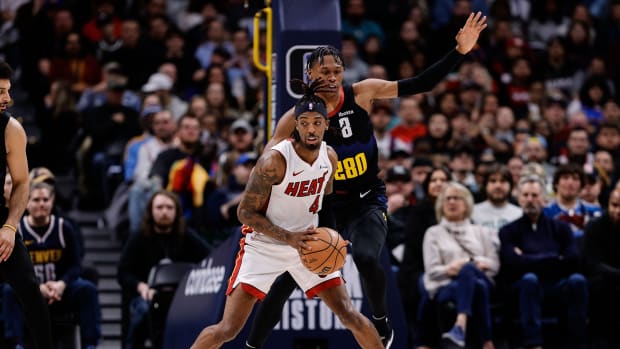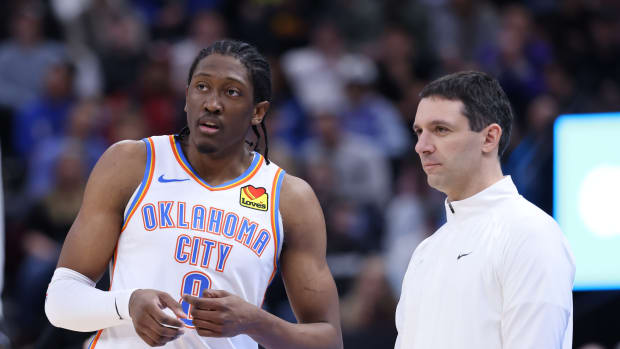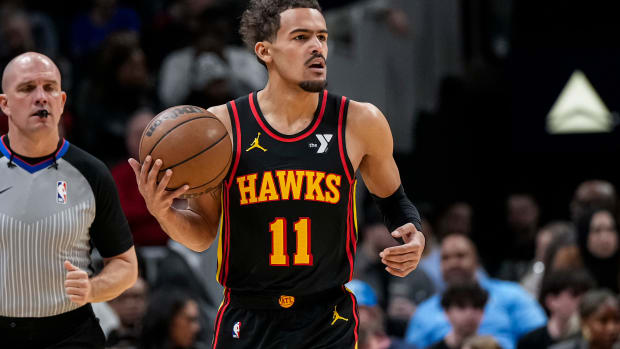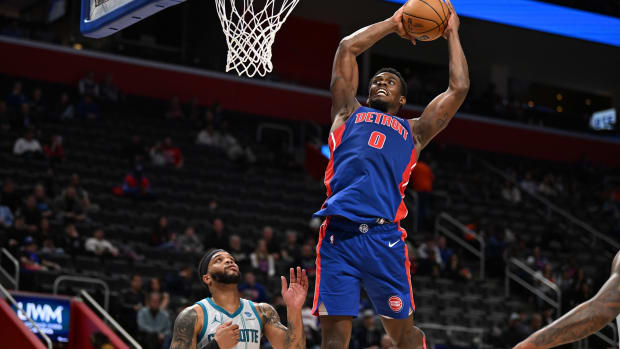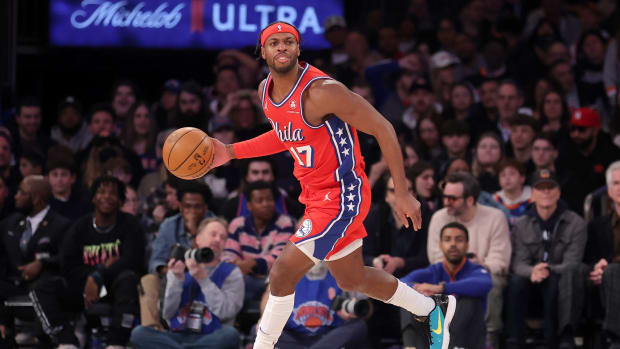Will the Cavs' Dramatic Overhaul Save Their Season?
As the trade deadline neared, much of the NBA’s teams danced around one another—courting a slightly better offer than the one in-hand, looking to turn the promise of some draft pick into a slightly better one. Cleveland, naturally, got things started in earnest. After kicking around a wide variety of trade scenarios over the past few months, the Cavs have reportedly agreed to a massive overhaul involving at least four other teams.
First off: The Cavs reportedly agreed to trade Isaiah Thomas, Channing Frye, and their 2018 first-round pick to the Los Angeles Lakers in exchange for Jordan Clarkson and Larry Nance. That alone would qualify as a considerable deadline shakeup.
But not long after, the Cavs also committed to a three-team trade with the Jazz and Kings, in which:
• Cleveland will acquire Rodney Hood and George Hill
• Utah will acquire Jae Crowder and Derrick Rose (who is likely to be released)
• Sacramento will acquire Iman Shumpert, Joe Johnson, and a 2020 second round pick (Originally from Miami, sent via Cleveland)
Following that flurry of activity, the Cavs then hashed out a deal to send Dwyane Wade—whose role would have been compromised by the influx of new wing players—back to the Heat in exchange for a heavily-protected second–round pick. Wade, his agent (Leon Rose), and LeBron James were all reportedly consulted on the decision.
Details on all three trades were first reported by Adrian Wojnarowski of ESPN.com.
Trade Grades: Cavs Remake Backcourt With Deal for Rodney Hood, George Hill
This is more a tidal wave of activity than a series of moves. When taken in full, it has to be the most complete in-season renovation of a potential contender that the league has ever seen. To even trade Thomas would have been a significant move. To send out Crowder, Wade, Rose, Shumpert, and Frye along with him completely reimagines what the Cavs are and could be.
Frankly, this is what they needed. The Cavs had lost 13 of their last 20 games, many in spectacularly implosive fashion. Players-only meetings were held and dirty laundry was aired out in the press. Cleveland took its inconsistent defensive effort to new extremes this season, settling in as one of the out-and-out worst defensive teams in the league. James—the nexus around which the entire franchise justifiably revolves—was constantly and visibly annoyed. The roster was untenable.
That dire state was difficult to extricate from Kyrie Irving’s trade demand last summer. It was the inciting event that led the team here—the move that brought Thomas and Crowder to Cleveland in the first place, and that unsettled the delicate balance of the Eastern Conference’s best team. What initially looked like a fair return under the circumstances for the Cavs has quickly deteriorated into one of the worst blockbuster trades in recent memory. Things have spiraled in Cleveland ever since.
Something had to be done at the deadline, and that something almost certainly had to involve Thomas. On the court, Thomas had been a disaster—completely unable to generate offense while playing some of the worst individual defense in the league. Off of it, Thomas succeeded only in stirring the pot and driving wedges into an already divided roster. There were deeper, more fundamental problems with the Cavs than Thomas, though his presence was actively making matters worse.
Cleveland’s potential for improvement begins there. Aside from the fact that Hill and Clarkson play better basketball than this version of Thomas, we should never underestimate the psychic value in scrubbing a locker room with this kind of funk. Dumping damn near half the roster should have that effect—if only because this team will be effectively starting from scratch. The Cavaliers have 29 games remaining on their regular–season schedule. That they would reboot the roster in this fashion speaks to how toxic the team dynamic had become.
So rather than play out the doomed prospects of that existing roster, the Cavs have wagered they can do better with a younger, deeper team. It’s not as if Cleveland was benefiting from any of its existing continuity anyway; the Cavs, even in their better moments, played like a disjointed team. James has more to work with now. Nance is exactly the kind of energy player who could thrive off of LeBron’s passing, just as Tristan Thompson once did. The combination of Hill, Hood, and Clarkson revitalizes a stale backcourt rotation. That mix brings playmaking, but not so much as to deny James control of the offense. It brings improved defense, as the baseline set by Thomas and Rose qualified as subterranean. Hill, in particular, should have no problem clearing it.
Trade Grades: Lakers Land Isaiah Thomas in Deal That Could Come Back to Bite Cavs
And in joining J.R. Smith, Kyle Korver, and rookie Cedi Osman, that trio greatly expands Cleveland’s night-to-night options. The Cavs suffered from having too many similar players with too many similar failings. This newfound variety should be invigorating, even if the total collection of acquired players doesn’t fill exactly the roles Cleveland needed. Such is life when dealing unfavorable players and contracts against the pressure of a deadline—particularly for a franchise working in service of two separate goals.
Any team with LeBron owes itself the chance to compete at the highest possible level. The Cavs, however, must also prepare for the possibility of James leaving in free agency this summer—an outcome LeBron left open with his ongoing contract flexibility. Interestingly enough, these moves may have facilitated the Lakers’ inevitable case to James by clearing enough salary from L.A.’s books to make room for two max contracts. Still, Cleveland made its move. Doing nothing would surely have riled James, while trading the Nets’ pick would have sacrificed one of the best potential avenues for the Cavs to move forward without him. Cleveland managed to split the difference in a constructive way. All it took to pull off that feat was a dramatic revamp and what looks to be a massive luxury tax bill.
No one trade would have saved this catatonic defense or plugged every hole in the Cavs’ rotation. This was, and is, a flawed team. But if the last three years have taught us anything, it’s that an energized LeBron can work wonders with flawed teams. This collection of players is more promising, but not so much as the idea that the best player in the sport might again find that transformative resolution.































